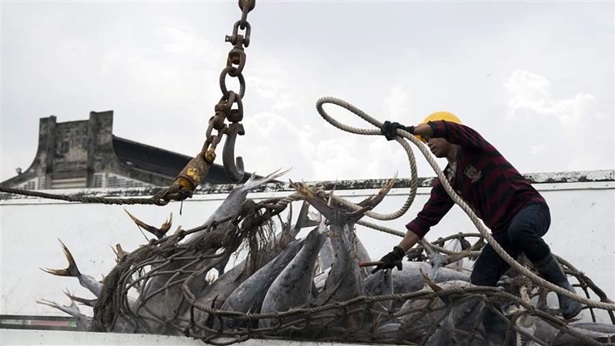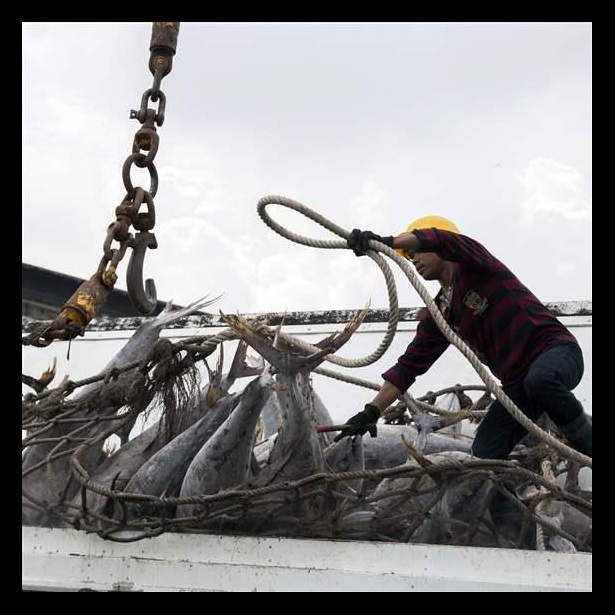Seafood Industry Should Encourage Safety of Fishing Crews
With standards lacking at sea, companies can leverage their power to help workers

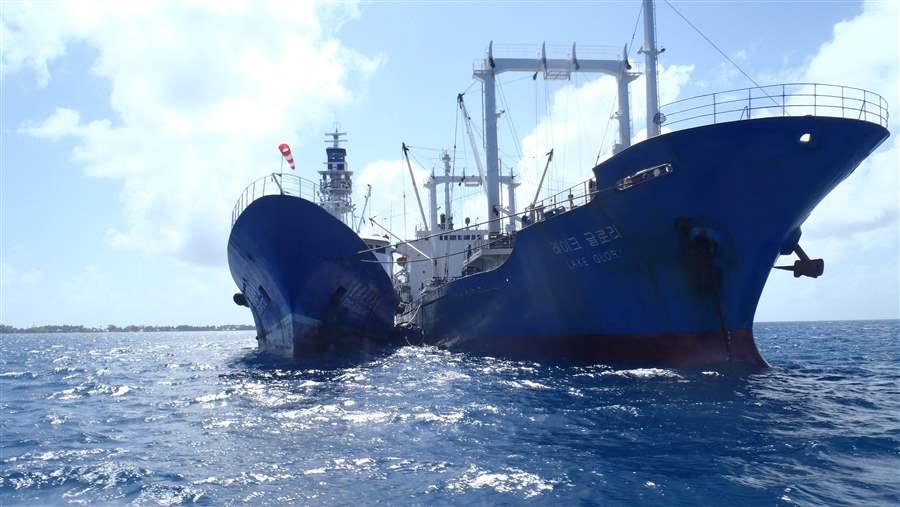
This video is hosted by YouTube. In order to view it, you must consent to the use of “Marketing Cookies” by updating your preferences in the Cookie Settings link below. View on YouTube
This video is hosted by YouTube. In order to view it, you must consent to the use of “Marketing Cookies” by updating your preferences in the Cookie Settings link below. View on YouTube
Seafood is the most valuable traded commodity in the world, registering nearly US$150 billion in global commerce annually. Unfortunately, there’s a dark side to the trade: illegal and unreported fishing, which accounts for up to $23.5 billion worth of seafood per year.
Large-scale illegal fishing cheats coastal communities out of food and income, skews scientific stock assessments, undermines law-abiding fishers, and deceives consumers who trust that the fish they purchase has the provenance retailers are claiming. Ending illegal fishing requires action in numerous areas, and one in particular is ensuring the legitimacy of seafood throughout the supply chain.


America’s Overdose Crisis
Sign up for our five-email course explaining the overdose crisis in America, the state of treatment access, and ways to improve care
Sign up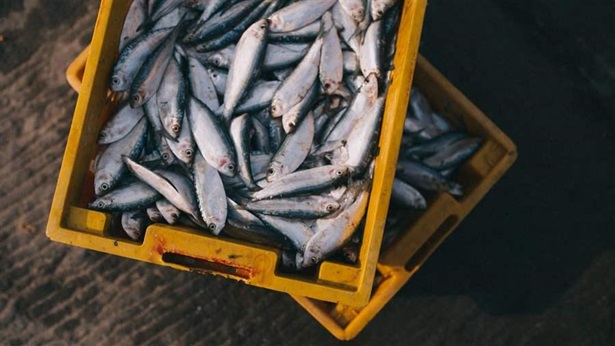
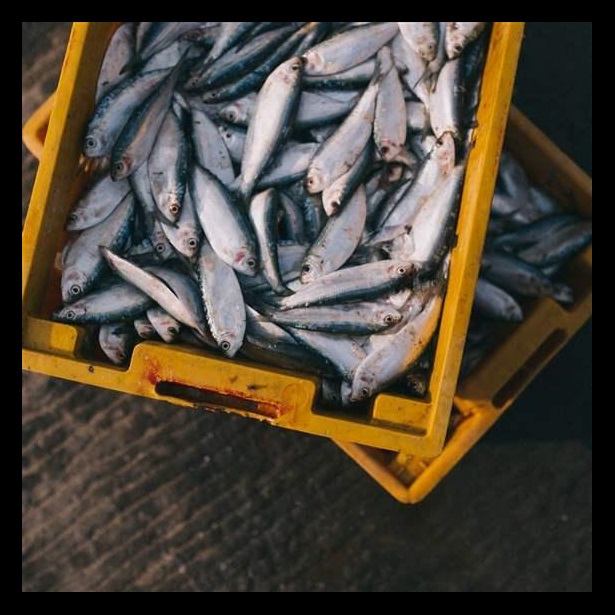
How to End Illegal Fishing
From coastal waters to the high seas, criminals are robbing the oceans and hurting economies
Are fishing fleets prioritizing safety?
Unscrupulous operators cut corners and seek to exploit gaps in fisheries management and in national and international policies—often further endangering workers in one of the most hazardous professions in the world. Because there are no binding international safety standards for fishing vessels and their crews, many operators not only act outside of fisheries management policies but also fail to invest in adequate safety equipment.
The International Labour Organization estimates that 24,000 people die every year in the fishing sector—more than 10 times the number on merchant ships—yet fishing vessels and their crews are excluded from nearly all international maritime regulations such as safety certifications or working condition inspections, meaning that exploitative practices can go undetected.
Safety is a concern on any vessel but is particularly troublesome on those that are at sea for months or even years at a time, without ever undergoing these inspections or certifications. Until policies are in place to ensure that fishing vessels maintain decent conditions for their crews, players at each stage of the supply chain—from wholesalers and processors to retailers—should demand that their suppliers ensure worker safety.
Mitigating the risks
Traditionally, The Pew Charitable Trusts has worked regionally and internationally to advance policies that will end illegal fishing. We are now engaging with the seafood industry to help companies mitigate the risk of illegally caught fish entering their supply chains. Exercising due diligence, ensuring compliance with internationally accepted policies, and undertaking risk assessments are critical to achieving this goal.
Pew—in collaboration with the Environmental Justice Foundation, Oceana, and the World Wildlife Fund, and with support from Oceans 5 and collaboration with select seafood buyers—has developed PAS 1550:2017, a publicly available standard that outlines risk assessment systems that importers and processors of fish, seafood, and marine ingredients can implement in line with the European Council regulation that establishes a community system to stop illegal fishing. We aim to build consensus among retailers, processors, and others in the food service sector on how to keep illicit catch off the shelf and ensure safe and decent working conditions for fishing crews.
Identification
Encouraging the use of vessel identification numbers is one approach Pew is taking to ensure transparency and accountability throughout the fishing sector. Companies that buy and sell seafood have the power to require their fishing fleets—every vessel 12 meters (39 feet) in length or more—to have International Maritime Organization (IMO) numbers, a unique and permanent identifier similar to a serial number that stays with the ship from construction to scrapping. IMO numbers could help curtail illegal fishing and improve safety at sea as they are essential in identifying ships. Anyone can check whether vessels are on the publicly available illegal, unreported, and unregulated (IUU) fishing lists of regional fisheries management organizations (RFMOs). Also, the Food and Agriculture Organization of the United Nations is developing a global record of fishing vessels that will show the relevant information of vessels at least 24 meters (79 feet) long or weighing at least 100 gross tons. The record, which will be completed in the coming years, will be expanded later to include smaller boats.
Tracking
In addition to having permanent ID numbers, vessels should also be tracked at all times. All major RFMOs require fishing vessels to have vessel monitoring systems (VMS) installed as the primary tracking device. These systems were developed specifically for fisheries management and used for location reporting. VMS data can be supplemented with secondary tracking systems like automatic identification systems, which have been used primarily as a safety tool for vessels to avoid collisions. When these systems are operated properly, the data can help cross-reference and verify vessel positions while supporting the safety of people working at sea.
Safety of crew
To minimize the risk of unsafe working conditions on board fishing vessels, retailers can require vessels to meet the standards outlined in the 2012 Cape Town Agreement. Companies that buy and sell seafood can play an integral role in the adoption and implementation of international policies such as this treaty by advocating for flag States to ratify it, help bring it into force, and ultimately raise the global safety standards for all fishing vessels.
By including a few simple provisions in seafood sourcing policies, companies can dramatically reduce the risk of illicitly caught fish entering into supply chains and ensure worker safety in the sector.
For more information on how Pew’s ending illegal fishing project is helping seafood companies keep IUU fish off the shelf, contact Huw Thomas.
Huw Thomas is a senior officer with The Pew Charitable Trusts’ ending illegal fishing project.



